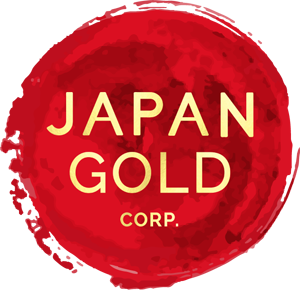History
The project lies within the Kitami mining region along the northern portion of the N-S trending Monbetsu-Rubeshibe graben zone, which hosts numerous epithermal mineral occurrences, historical mines and workings dating from the early 1900’s. The most notable mine in the district is the Konomai deposit. From 1915-73, this mine produced a total of 2.35 Moz of gold at an average grade of 6.4 g/t Au and 40 Moz of silver at an average grade 109 g/t Ag1. The southern portion of the Konomai vein system lies within the northeastern part of the Hakuryu Project. The largest of these lodes are known as the Motoyama and Fujishima veins, which produced more than 770 Koz of gold and 7.6 Moz of silver2. Bonanza gold grades (40 g/t Au) in the form of crustiform- and colloform-banded, quartz-calcite-adularia ± sulfide veins are reported. The small Hakuryu lode, which lies in the southeastern portion of the project, produced about 8,000 tonnes of ore at 4.9 g/t Au and 43 g/t Ag3.
Limited exploration via trenching, drilling and underground exploration drives was conducted by miners in the period between 1915 and 1962. In 1915, the Motoyama Outcrop was discovered, and two years following, Sumitomo Mining Co. acquired the mining rights. In 1919, a processing facility was constructed and formal mining operations commenced. As development progressed, new deposits were discovered one after another, and by 1931, Konomai was the fifth largest operating gold mine in the world, and the largest in Asia.
By August 1949, the mill processed 400 tonnes per day, which increased to 600 t / day in 1951. By June of the same year, Sumitomo was mining the third level in the Sumiyoshi deposit, where an 8 m wide vein averaging 10 g/t Au was discovered. Following this discovery, the processing facility was expanded to more than 800 t / day.
As part of a regional metallogenic study reported in 1990, the MMAJ undertook regional rock and soil sampling over a 15 x 12km area, which partially overlaps and includes the eastern half of Japan Gold’s Hakuryu license area and extends 10 km to the east and 5km to the southeast. Analytical results yielded peak assays of 6.02 g/t Au and 18.9 g/t Ag from 78 rock samples (range: 1 - 6020 ppm Au and 0.01 - 18.9 ppm Ag)4.

